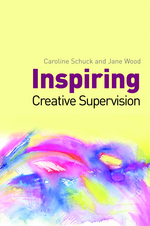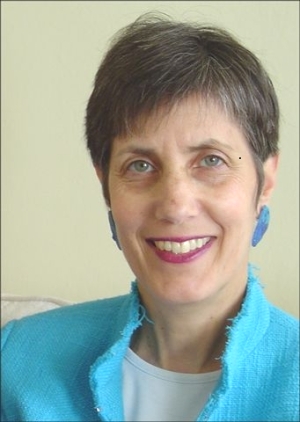By Caroline Schuck and Jane Wood, authors of the forthcoming book Inspiring Creative Supervision.
 Creative supervision employs the use of a wide range of dynamic techniques and interesting resources in order to access unconscious knowledge in supervision or self reflection. We recommend techniques such as narrative, drawings, charts, metaphors and visualization. Familiar resources such as toys, puppets, objets trouvées (found objects) and picture postcards are used in new and original ways to enhance reflective practice. The supervisee is encouraged to engage with their intuition, have fun, and be creative, playful or spontaneous.
Creative supervision employs the use of a wide range of dynamic techniques and interesting resources in order to access unconscious knowledge in supervision or self reflection. We recommend techniques such as narrative, drawings, charts, metaphors and visualization. Familiar resources such as toys, puppets, objets trouvées (found objects) and picture postcards are used in new and original ways to enhance reflective practice. The supervisee is encouraged to engage with their intuition, have fun, and be creative, playful or spontaneous.
In order to parallel the experience that your supervisees will be undertaking with you, we challenge you to try any of the following exercises. These should help you loosen up your style as a supervisor:
Make a doodle
Get a large plain piece of paper and using a soft pencil scribble with large arm movements across the page.
Sit back for a moment and then returning to the page see what images arise for you out of the doodles. Using felt tips or coloured pencils develop the picture. When you have come to a natural conclusion, review what you have drawn, and see what it says about you.
Use household objects
Collect a dozen or so small household objects. For example, bottle tops, corks, seashells, erasers, elastic bands, pen tops, dried beans, buttons or clothes pegs.
Now think of an incident that happened either last Christmas or on your summer holiday and represent it using your objets trouvées. Show the dynamic and interaction of what happened. Leave it for 30 minutes or more, and on returning to it observe it with fresh eyes. What can you learn from it?
Pictures in the clouds
Go for a walk and see what pictures you can see in the clouds or in the trees. Let your imagination run free. On returning home, reflect on your moods and feelings at the time, and how you feel now.
Make a collage
Collect up old newspapers, a blank sheet of paper, scissors, pencils and glue. Cut out any pictures and headlines that appeal to you and put them together on the sheet of paper in any way that you wish. Glue them on.
You will have made up a storyboard or vision board. What are you attracted to? What are you telling yourself?
Reflect after playing
Notice your responses to doing these exercises. It is worth spending some time writing in your reflective journal in order to deepen your understanding of both the process and the results. What did you feel while you were in the process of creating? Were you pleased with the result? Did it trigger any further thoughts, emotions or experiences?
It is our experience that when you engage with playfulness, experimentation, spontaneity and creativity, it opens up your own ability to work in more ways with your supervisees. It helps you to re-connect with the right side of the brain, and it is an interesting and dynamic way of self reflecting.
This is a taster of what you will find in our innovative new book, Inspiring Creative Supervision, which draws together theory, research and practical exercises, and provides ideas for setting up and running creative supervision sessions, including how to get started. Click below for more info.
 Caroline Schuck is a qualified supervisor with a background in humanistic psychotherapy. She teaches supervision skills and reflective practice at the University of Westminster, London, works one to one, runs groups and co-facilitates supervision skills workshops for the London Deanery.
Caroline Schuck is a qualified supervisor with a background in humanistic psychotherapy. She teaches supervision skills and reflective practice at the University of Westminster, London, works one to one, runs groups and co-facilitates supervision skills workshops for the London Deanery.
 Jane Wood is a qualified supervisor and teacher, working in universities and colleges in London and Japan. She teaches supervision skills and runs workshops, as well as supervising groups and individuals internationally. She is also a self-taught artist.
Jane Wood is a qualified supervisor and teacher, working in universities and colleges in London and Japan. She teaches supervision skills and runs workshops, as well as supervising groups and individuals internationally. She is also a self-taught artist.
Copyright © Jessica Kingsley Publishers 2011.